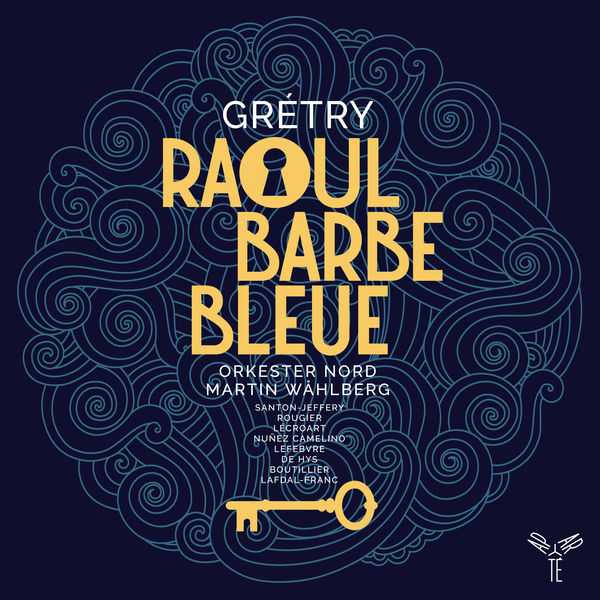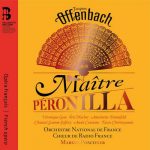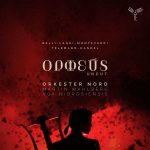

Composer: André Ernest Modeste Grétry
Performer: François Rougier, Matthieu Lécroart, Chantal Santo-Jeffery, Eugénie Lefebvre, Chantal Santon-Jeffery, Marine Lafdal-Franc, Enguerrand de Hys, Jérôme Boutillier, Manuel Nuñez Camelino
Orchestra: Orkester Nord
Conductor: Martin Wåhlberg
Format: FLAC (tracks)
Label: Aparté
Catalogue: AP214
Release: 2019
Size: 1.5 GB
Recovery: +3%
Scan: yes
Raoul Barbe-Bleue, Op. 28
01. Ouverture
Acte I
02. Scène 1: “Ils viennent vous remercier”
03. Scène 1: Duo “Il m’enlevait”
04. Scène 1: “J’aurais été bien curieuse de voir l’entreprise”
05. Scène 2: Duo “Vergy, jamais Isaure, jamais je ne peux être”
06. Scène 3: “Ils s’aiment, vous le voyez”
07. Scène 4: “Faites ici, mon frère, rassembler”
08. Scène 5: “Quoi ! tu hésites”
09. Scène 6: Air “Moi je serais infidèle à Vergy !”
10. Scène 7: Marche
11. Scène 7: “Venez régner en souveraine”
12. Scène 7: “Sire Raoul, mes frères connaissent mes intentions”
13. Scène 8: “Non, le serment fait à Vergy” (Ariette)
14. Scène 9: “Ah ! Damoiselle Isaure”
15. Scène 10: “Ah, mes frères”
16. Scène 11: Duo “Ah, je vous rends, charmante Isaure, les serments”
17. Scène 12: “Hé bien, ma sœur”
18. Scène 12: “Vivent ces deux époux !”
19. Scène 12: Marche
Acte II
20. Scène 1: Entracte
21. Scène 1: “Eh bien ! Osman”
22. Scène 1: Duo “Je te trouve bien pitoyable”
23. Scène 2: “Votre réveil, Madame, a précédé le lever de l’aurore”
24. Scène 2: Trio “Jurez-moi”
25. Scène 3: “Qu’est-ce que j’entends ?”
26. Scène 4: “Quelle grande et belle femme !”
27. Scène 5: “Ah, malheureux Vergy”
28. Scène 6: Air “Vergy, ton souvenir fera le malheur de ma vie”
29. Scène 7: “Quel effroi vous saisit ?”
30. Scène 8, 9: Air “Je me meurs” – “Non, jamais rien de plus horrible”
31. Scène 9: “Fuyons, Vergy, fuyons.”
32. Scène 10: “Osman, mon cher Osman”
33. Scène 10: Danse
34. Scène 11: Air “Il n’est plus de malheur”
35. Scène 11: Andante “Ma chère Isaure”
36. Scène 11: Danse finale
37. Entracte
Acte III
38. Scène 1: “Que veut dire ce signal ?”
39. Scène 2: Duo “Cher Vergy, sauvez vos jours”
40. Scène 3: “Voici Monseigneur.”
41. Scène 4: “Votre sœur a le ton bien brusque”
42. Scène 5: Air “Perfide, tu l’as ouverte”
43. Scène 6: “Madame, vous avez bien tardé.”
44. Scène 7: “Quoi, Raoul, vous oseriez” – “Et cet indigne vêtement ! Et je n’ai point d’armes !”
45. Scène 7: Trio “Vergy, ma sœur, ne vois-tu rien venir ?”
46. Scène 9: “Hé, Seigneur Raoul”
47. Scène 9: Symphonie
48. Scène 9: Chœur général “Vit-on jamais de tels forfaits ?”
A collaboration of the Norwegian Music Festival Barokkfest and the Centre de musique baroque de Versailles. Premiered just a few months before the French Revolution and fallen into oblivion since, Raoul Barbe-bleue is an unclassifiable opéra comique whose musical and dramatic implications are so remarkable that it even inspired Offenbach.
Marvellous and medieval universes meet in this drama based on Perrault’s tale that announces, both through its writing and its inherent horror, the upcoming musical romanticism. Indeed, far from being an archetype of the genre, Raoul Barbe-bleue depicts a cruel gentry from a quite political point of view, that it even dares to mock by mingling tragical register and comic effects, from travesty to the figure of the scapegoat valet.
The mysterious atmosphere that emerges from the drama (and that recalls eventually Weber’s Singspiel) stems mostly from a musical writing that widely supports the suspense and that cannot be compared to the naïve and simple early works of the composer. Indeed, Grétry’s musical refinement and elegance serve the dramatic strength of his work and evokes Mozart’s Requiem introit.
Recorded in the beautiful theatre in Trondheim (Norway) with a brilliant cast under Martin Wahlberg’s direction, Raoul Barbe-bleue reveals a considerable richness that will certainly strike both the neophyte and the specialist.
This performance of Raoul Barbe-Bleue (‘Raoul Bluebeard’) from the 16th-17th November 2018 at Selbu Church (Norway) follows a number of performances at the Trøndelag Theatre as part of the Barokkfest Early Music Festival in Trondheim, in coproduction with the Centre de Musique Baroque de Versailles.
The comic opera was written on 2nd March 1789, on the eve of the French Revolution and is a parody of two tales. André Grétry and his librettist Michel-Jean Sedaine were inspired both by Perrault’s story of Bluebeard and by the legend of The Lady of Fayel, which may not be as well-known nowadays but was very much in fashion in the 18th century and is itself a fusion of two tales. Sedaine deftly ensured that the opera included the first names of the various main characters to indicate that it is indeed a comedy and not a tragedy. Wagner even recalled in his memoirs how he had seen the opera performed in Dresden at the age of five and had been fascinated ever since.
Now, re-enacted for the first time since 1789 in a Franco-Norweigan stage version conducted by Martin Wåhlberg, this version of Raoul Barbe-Bleue is guaranteed to make you laugh with its hybridised style that somewhat confused the 18th century audience. It’s a challenge but a wonderful opportunity to experience this work, produced primarily for the stage, without actually seeing the performers here – just by creating an inner theatre in your mind.



